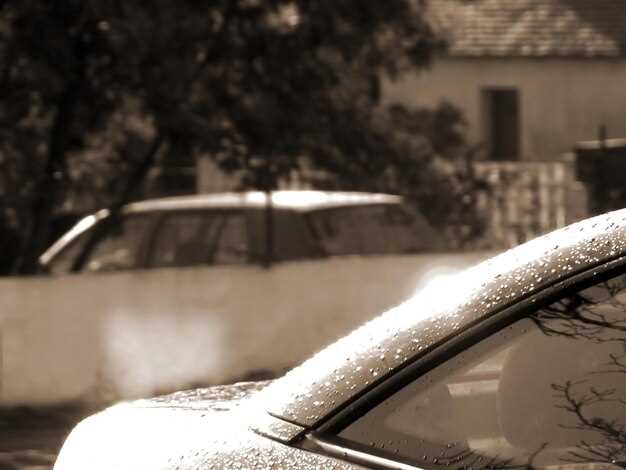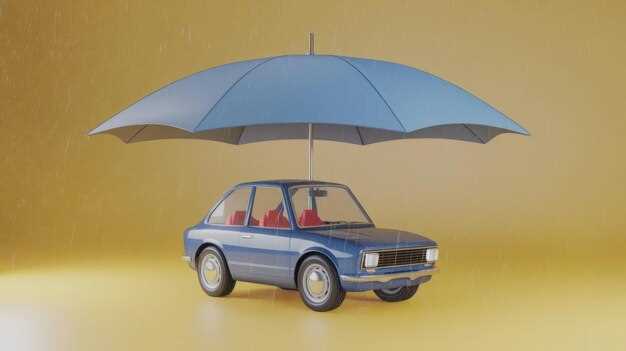How Weather Affects Classic Car Insurance

The relationship between weather conditions and classic car insurance rates is a critical aspect for owners and collectors. Understanding how various weather patterns can lead to potential damage is essential for accurately assessing insurance costs. Factors such as temperature fluctuations, precipitation, and severe weather events play a significant role in determining the premium rates of classic cars.
Classic cars are often more vulnerable to environmental factors than newer vehicles, making it imperative for owners to consider weather-related risks. For instance, hailstorms, heavy rain, and even prolonged exposure to UV rays can cause notable damage to the exterior and mechanical components of vintage automobiles. Insurance companies take these risks into account when calculating premiums, often leading to higher rates for vehicles stored or driven in areas prone to adverse weather conditions.
Moreover, the geographic location can greatly influence the insurance rates of classic cars. Regions that experience harsh winters or frequent natural disasters may see a spike in insurance costs due to the increased likelihood of damage. In contrast, areas with milder climates may enjoy lower premiums. Understanding these nuances allows classic car owners to make informed decisions regarding their insurance coverage and protection against weather-related threats.
Impact of Severe Weather Conditions on Classic Car Valuation
Severe weather conditions can significantly affect the valuation of classic cars. Factors such as heavy rain, hail, snow, and extreme temperatures can lead to physical damage or deterioration of classic vehicles. Cars exposed to severe elements may suffer rusting, paint damage, and mechanical failures, all contributing to a decrease in their market value.
Insurance policies for classic cars often take weather-related risks into account. A vehicle that has been damaged by severe weather may require extensive repairs, leading to increased insurance claims. Insurance companies assess the risk level associated with storage conditions and geographic location when determining premiums. Areas prone to flooding or excessive hail may see higher insurance rates due to the potential for damage.
Moreover, severe weather can impact the overall demand for classic cars. For example, a rise in storms may lead to more owners deciding to sell their vehicles, which could saturate the market and reduce prices. Conversely, classic cars that are well-preserved and stored in climate-controlled environments are likely to retain their value better, making them more appealing to collectors and investors.
In summary, the influence of severe weather conditions on the valuation of classic cars is substantial. Owners must consider both the physical impacts on their vehicles and the broader implications for insurance and market trends. Proper maintenance and weather-proofing measures can help mitigate these risks and protect the value of classic cars.
Understanding Comprehensive Coverage for Weather Damage

Comprehensive coverage is a vital component of classic car insurance, especially when considering the potential for weather-related damage. Unlike liability insurance, which covers damages caused to others, comprehensive insurance protects your vehicle against a variety of non-collision incidents, including those caused by natural elements.
Weather conditions can lead to significant risks for classic cars, which are often more vulnerable than modern vehicles due to their age and unique materials. For instance, hailstorms can cause dents and paint damage, while floods can wreak havoc on electrical systems and interiors. Having comprehensive coverage ensures that owners are financially protected against these types of damage, allowing for repairs without a substantial out-of-pocket expense.
It is essential to understand that comprehensive coverage is not a one-size-fits-all policy. Each insurance provider may have specific terms and conditions that outline what types of weather damage are covered. For example, some policies might exclude certain natural disasters or require additional endorsement for coverage to be effective in rare situations, such as volcanic eruptions or earthquakes.
When selecting a policy, classic car owners should closely review the details regarding weather-related protection. Factors such as deductibles and limits on claims can significantly influence the level of coverage and the premium costs. Furthermore, maintaining accurate documentation of the vehicle’s condition and any previous weather-related damages can support claims and facilitate a smoother process with insurers.
Ultimately, understanding comprehensive coverage for weather damage is essential for classic car enthusiasts. This protection not only safeguards their investments but also provides peace of mind, allowing them to enjoy their vehicles regardless of what Mother Nature may bring.
Regional Weather Patterns and Their Effect on Premium Costs

Insurance premiums for classic cars can vary significantly based on regional weather patterns. Areas prone to extreme weather conditions, such as hurricanes, heavy snowfall, or frequent thunderstorms, often see higher premium costs. This is largely due to the increased risk of damage to vehicles, which can result from severe weather events.
In regions where harsh winters are common, the likelihood of accidents or damage caused by icy roads is a significant concern for insurers. Therefore, drivers in these areas may face elevated premium rates to account for the potential risks associated with winter weather.
Conversely, regions with milder climates often experience lower premiums. The absence of extreme weather conditions reduces the chances of damage to classic cars, allowing insurers to offer more competitive rates. However, other factors such as theft rates and population density may still influence costs.
Moreover, areas that experience frequent natural disasters, like tornadoes or flooding, pose unique challenges for underwriters. The potential for substantial damage in such events makes it essential for insurers to adjust their pricing strategies accordingly. In these instances, premiums can rise sharply to mitigate the risk of significant payouts.
Ultimately, understanding regional weather patterns is crucial for both classic car owners and insurance providers. By recognizing how local climate factors into risk assessments, car owners can make informed decisions regarding coverage options and potential premium costs.



